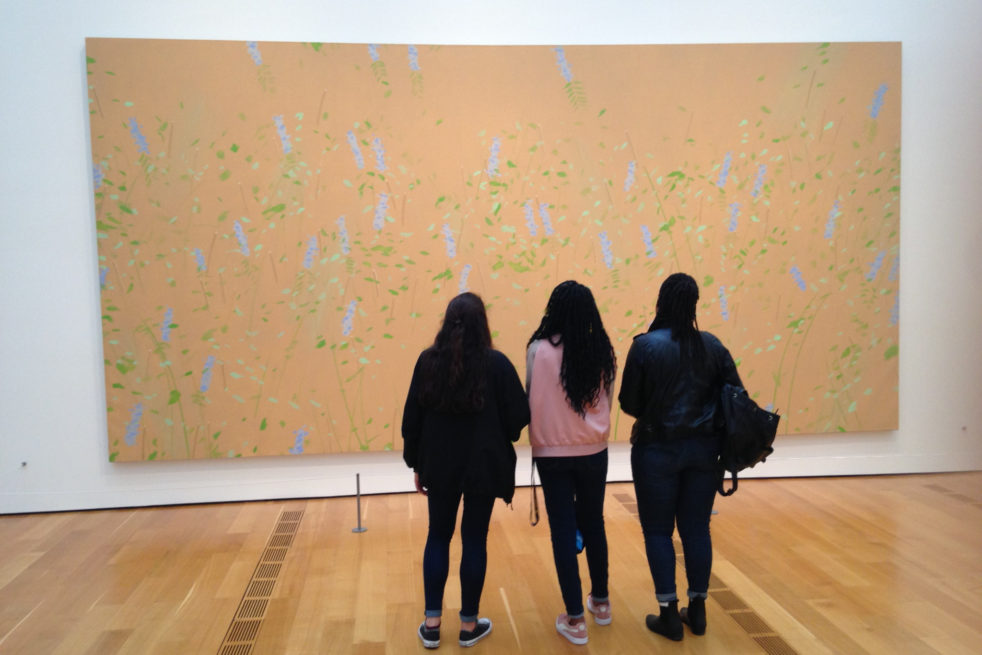There are few experiences all Tech students share, but one that most — if not all — have in common is completing the ENGL 1101 and 1102 courses. Although these are graduation requirements, there is more at work in these classes than simply teaching students communication skills.
Many of the professors teaching these writing and communication classes participate in the Marion L. Brittain Postdoctoral Fellowship and use these classes as a chance to conduct research. One such fellow, Dr. Nick Sturm pointed out the unique characteristics of the fellowship.
“The purpose of those classes that the fellows teach isn’t necessarily about any of our specific subject expertise, but we are encouraged to use our subject expertise in these classes as a vehicle for teaching this pedagogy,” said Strum.
“It’s really neat to see a fellowship at a university like Georgia Tech that’s encouraging a multidisciplinary humanities-based approach to teaching communication.”
The Fellowship treats the teaching experience as an opportunity for the fellows to further their research in various topics.
“One of the things that’s most important for us as faculty is that we’re encouraged to merge our research and our teaching completely,” said Strum.
This research can be either pedagogical research or research on the topic the fellows specialized in for their doctorate. Sturm, who holds degrees in history, poetry and creative writing, now teaches classes at Tech focused on poetry, painting and film. He is able to use these topics for more than just teaching his students about the surface content.
“We can see students as pure researchers in our work, said Sturm. “My students contribute to my research and often are creating projects that contribute to my field of study.”
As a way of documenting the work done by the Brittain Fellows, the online forum TECHStyle was created in 2011 for sharing articles fellows write on a variety of topics related to communication and writing pedagogy. Currently, Sturm acts as the head editor of TECHStyle.
“It is a place for us as Brittain Fellows to formalize for ourselves in writing the way that our research and our teaching is reciprocal,” said Sturm, who sees TECHStyle as having become similar to an academic journal in recent years.
Additionally, TECHStyle provides a record of ways in which education is constantly changing over time.
“We’re framing all that work in a really public facing way to show that the pedagogy is not mechanical,” said Strum. “It’s absolutely the way that we’re thinking and it’s helping us innovate in our work and we want to show that through TECHStyle.”
Sturm sees this process of innovative education over time as a way of proving to students the power of multimodal communication.
“My students come in, and they know nothing about poetry, painting, or they think they don’t,” said Sturm. “Fifteen weeks later, they produce incredible, innovative, multimodal work that is contributing to the field of study.”
But TECHStyle’s reach is not limited to just the Tech community.
“The blog is also really useful as a tool for instructors at other institutions who are looking to innovate with their pedagogy,” said Sturm. “We’re providing all sorts of examples of how our students use multimodality to create really interesting research-based humanities work.”
Sturm also emphasized that for the Brittain Fellows, TECHStyle is a friendly community where academic writing can first be published, before moving on to another platform.
“Academic publishing can be pretty intimidating. There’s a lot of gate-keeping,” said Sturm, advocating the welcoming environment of TECHStyle as an alternative.
“It’s a way to publish your work in a way that’s really friendly.”
On TECHStyle, both written articles and other forms of media, such as podcasts, are published.
“If we’re teaching multimodality, we want to show our students that we’re working in these modes as well,” said Sturm.
“We’re also not interested and invested in.”
Although Sturm’s time as editor will be coming to an end this semester, he still has a vision for TECHStyle’s future as well for its success.
“My idea for it is that it just stays a lively place for conversation,” said Sturm. “It needs to be alive and it needs to be a place where ideas are in progress, not where things are defined and set in stone.
“I think that’s the whole
point of blogs in general is that they are these active places where people are participating.”
Sturm pointed out that there are many individuals who contribute to the continued success of TECHStyle, including Dr. Rebecca Burnett, the Director of the Writing and Communication Program at Tech. He also reiterated that the uniqueness of the Brittain Fellowship allows for not only the fellows to benefit, but also the students, as they are able to actively apply the skills they learn in English classes at Tech.
“Posting my students’ work on TECHStyle in a different context shows them that their work has public facing value,” said Strum. “That’s something that’s often lacking. I think students don’t see, ‘How’s the work that I do in class matter?’ And this is an example of the way it matters.”
“Posting my students’ work on TECHStyle in a different context shows them that their work has public facing value,” said Strum.
“That’s something that’s often lacking. I think students don’t see, ‘How’s the work that I do in class matter?’ And this is an example of the way it matters.”
